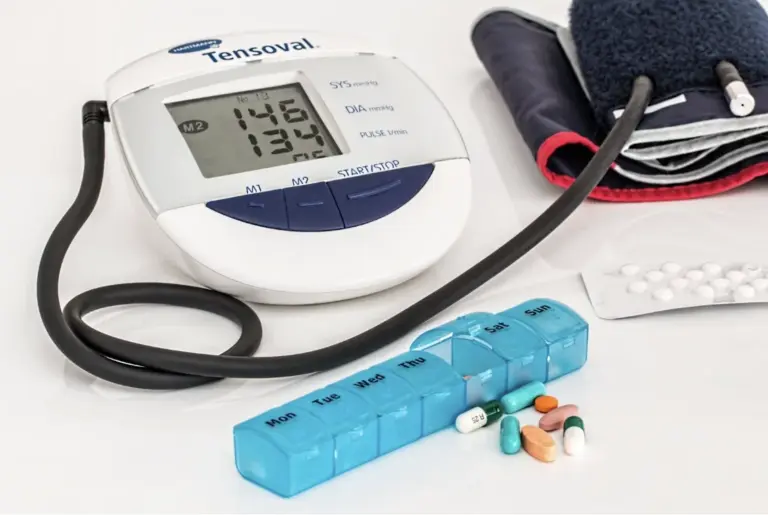Welcome to our guide on diaphragmatic breathing – a powerful technique with a multitude of benefits for your physical and mental well-being. Breathing, the very essence of life, is an involuntary action that sustains us from the moment we are born. Yet, how often do we pause to consider the way we breathe and the impact it can have on our overall health?
Diaphragmatic breathing goes beyond the automatic, shallow breaths we take in moments of stress or anxiety. Instead, it empowers us to harness the true potential of our breath, bringing about a sense of calm, reducing stress, and even aiding in the management of high blood pressure. In this article, we will delve into the concept of diaphragmatic breathing, explore its numerous benefits, and discover how it can be an essential part of lifestyle modifications for hypertension.
Whether you seek stress relief, improved cardiovascular health, or simply want to elevate your overall well-being, diaphragmatic breathing can be the key. So, let’s take a moment to slow down, take a deep breath and get started to read more!
What is Diaphragmatic Breathing?
Diaphragmatic breathing, also called abdominal breathing or deep breathing, is a technique that involves using your diaphragm — a large muscle located between your chest and abdomen. Diaphragmatic breathing is a fundamental aspect of breathing that involves the coordinated action of the diaphragm, intercostal muscles, and accessory muscles of respiration to facilitate a more efficient exchange of gases in the lungs.
As you inhale during diaphragmatic breathing, the diaphragm contracts and moves downward, creating more space in the chest cavity. This action allows the lungs to expand fully, leading to a deeper intake of oxygen-rich air. Simultaneously, the intercostal muscles, situated between the ribs, expand the ribcage outward, aiding in the expansion of the chest. The combined effort of the diaphragm and intercostal muscles ensures that you breathe fully and effectively.
In contrast, shallow breathing, often associated with stressful or anxious situations, primarily involves the use of the chest and shoulders to breathe. During shallow breathing, the breaths tend to be quick and limited, resulting in a reduced exchange of gases in the lungs. This type of breathing can perpetuate feelings of tension and anxiety, as it triggers the body’s stress response, known as the fight-or-flight response.
Diaphragmatic breathing, on the other hand, initiates the body’s relaxation response, which is essential for reducing stress and promoting a sense of calm. When you engage in diaphragmatic breathing, the body interprets this deep, slow breathing as a signal that you are safe and that there is no immediate threat. Consequently, stress hormones are decreased, and the heart rate and blood pressure are lowered.
What are the benefits of diaphragmatic breathing?
Here are a few of the benefits of Diaphragmatic Breathing:
- Stress Reduction:Diaphragmatic breathing is a powerful stress management tool. When you practise this technique, it activates the body’s relaxation response, signalling to the brain that everything is okay. This helps reduce the production of stress hormones like cortisol, leading to a calmer and more relaxed state of mind.
- Improved Blood Pressure:For individuals dealing with high blood pressure, diaphragmatic breathing, a breathing exercise for high BP, can be particularly beneficial. By calming the nervous system and reducing stress, this deep breathing exercise contributes to better blood pressure control and overall heart health. Regular practice can promote relaxation, leading to lower stress hormone production and more relaxed blood vessels, resulting in improved blood pressure regulation.
- Enhanced Respiratory Function:The act of consciously engaging your diaphragm while breathing deeply can improve lung capacity and efficiency. It helps to clear out stagnant air from the lower parts of the lungs, leading to better oxygen exchange and overall respiratory function.
- Support for Cardiovascular Health:In addition to its positive impact on blood pressure, diaphragmatic breathing can be beneficial for overall cardiovascular health. By reducing stress and promoting relaxation, this deep breathing technique can help lower the risk of heart disease and other cardiovascular issues.
- Boosted Immune System:Deep breathing exercises have been shown to positively impact the immune system. By reducing stress and increasing oxygenation, diaphragmatic breathing can bolster the body’s natural defence mechanisms, making it more resilient against illnesses.
- Pain Management:Practising diaphragmatic breathing can help alleviate discomfort and pain by promoting relaxation and releasing tension. It can be a helpful tool in managing chronic pain conditions and aiding in the recovery process.
- Weight management and Digestion:Diaphragmatic breathing can also play a role in weight management and digestive health. When we are stressed, the body enters a fight-or-flight response, and digestion is often put on hold as the body prioritises dealing with the perceived threat. This can lead to digestive issues such as indigestion, bloating, and even contribute to weight gain over time. By practising diaphragmatic breathing and activating the body’s relaxation response, digestion is supported, allowing for more effective nutrient absorption and a reduction in gastrointestinal discomfort.
How to Perform Diaphragmatic Breathing?
Now that you know about the benefits, let’s dive into how you can perform diaphragmatic breathing yourself. Here’s a step-by-step guide:
- Find a Comfortable Position:Begin by finding a quiet and peaceful place to sit or lie down. Make sure you’re in a comfortable position, free from distractions. You may choose to sit on a chair with your feet flat on the floor or lie down on your back with your knees slightly bent. Place one hand on your chest and the other on your abdomen.
- Focus on Your Breath:Close your eyes and take a moment to tune in to your breath. Inhale gently through your nose, directing the air towards your diaphragm. As you inhale, let your abdomen expand outward, feeling it rise and fall with each breath. Avoid lifting your chest excessively during this process.
- Inhale Slowly and Deeply:Now, take a slow and deep breath through your nose, counting to four as you inhale. Allow your breath to flow smoothly and steadily, filling your lungs completely. As you inhale, visualise your lungs expanding and your diaphragm descending, creating space for the incoming breath.
- Exhale Gradually:Next, exhale slowly through your mouth, counting to six as you release the breath. Focus on emptying your lungs completely during the exhalation. As you breathe out, feel your abdomen gently contract, guiding your hand inward.
- Practise Mindful Breathing:Continue this deep breathing pattern for a few minutes, ideally practising for at least 5-10 minutes daily. As you breathe deeply, maintain awareness of each breath, savouring the calming sensation it brings. If your mind wanders, gently guide your focus back to the rhythm of your breath.
- Make It a Habit:Consistency is key to mastering diaphragmatic breathing. Try to incorporate this technique into your daily routine, whether it’s during moments of stress, as part of a meditation practice, or before bedtime to promote relaxation and better sleep.
With regular practice, diaphragmatic breathing will become more natural and effortless, and its benefits will be increasingly pronounced in your daily life. Remember that patience and persistence are essential as you embark on this transformative journey of deep, intentional breathing. Allow diaphragmatic breathing to be a guiding anchor, supporting you in navigating life’s challenges with a sense of calm and inner harmony.
Diaphragmatic Breathing Exercises
Apart from the basic technique, there are several diaphragmatic breathing exercises you can try for additional benefits:
- 4-7-8 Breathing:The 4-7-8 breathing technique is a simple yet effective exercise to promote relaxation and manage anxiety. To begin, find a comfortable position and take a few deep breaths to settle into a calm state. Then, follow these steps:
- Inhale deeply through your nose for 4 counts
- Hold your breath for 7 counts
- Exhale slowly through your mouth for 8 counts
- Repeat for relaxation and anxiety management
- Progressive Muscle Relaxation:Combining diaphragmatic breathing with progressive muscle relaxation is a powerful technique to release physical tension and foster a deep sense of relaxation. Here’s how to practise this exercise:
- Find a comfortable position and breathe deeply
- Tense a specific muscle group while inhaling
- Exhale and release the tension completely
- Move to the next muscle group and repeat
- Promotes physical relaxation and calmness
- Guided Imagery:Pairing diaphragmatic breathing with guided imagery is another way to enhance the relaxation response and create a tranquil mental space. Follow these steps:
- Practise diaphragmatic breathing
- Visualise a peaceful and serene place
- Engage all senses in the mental scene
- Breathe deeply and immerse in the serenity
- Reduces anxiety and enhances well-being
In a Nutshell
Congratulations, you now possess an extensive understanding of diaphragmatic breathing and its myriad of benefits. This technique can be a game-changer for stress reduction, high blood pressure management, improved respiratory function, and immune system support. By incorporating diaphragmatic breathing into your daily routine, you can take a step towards a healthier and more balanced life.
As part of lifestyle modifications for hypertension, diaphragmatic breathing can play a crucial role in supporting your overall health. If you’re dealing with high blood pressure or any stress-related issues, consider giving this powerful technique a try. And remember, for personalised medical advice and guidance, reach out to healthcare professionals through BPinControl’s online portal “Find a Physician.”
Their expertise can help you make informed decisions about your health and well-being. As you continue on your wellness journey, don’t forget to explore more informative blogs and resources available on BPinControl’s platform to enrich your knowledge further on topics like high blood pressure, stress management and many more. So, breathe free and live free with the transformative power of diaphragmatic breathing!
Disclaimer
The information contained in this article is to educate, spread awareness in relation to hypertension and other diseases to the public at large. The contents of this article are created and developed by BPinControl.in through its authors, which has necessary, authorisations, license, approvals, permits etc to allow usage of this articles on The Website. The views and opinions expressed in this article are views, opinions of the respective authors and are independently endorsed by doctors. Although great care has been taken in compiling and checking the information in this article, The Website shall not be responsible, or in any way liable for any errors, omissions or inaccuracies in this article whether arising from negligence or otherwise, or for any consequences arising therefrom. The content of this article is not a substitute for any medical advice. The Website shall not be held responsible or liable for any consequence arising out of reliance on the information provided in the article.




